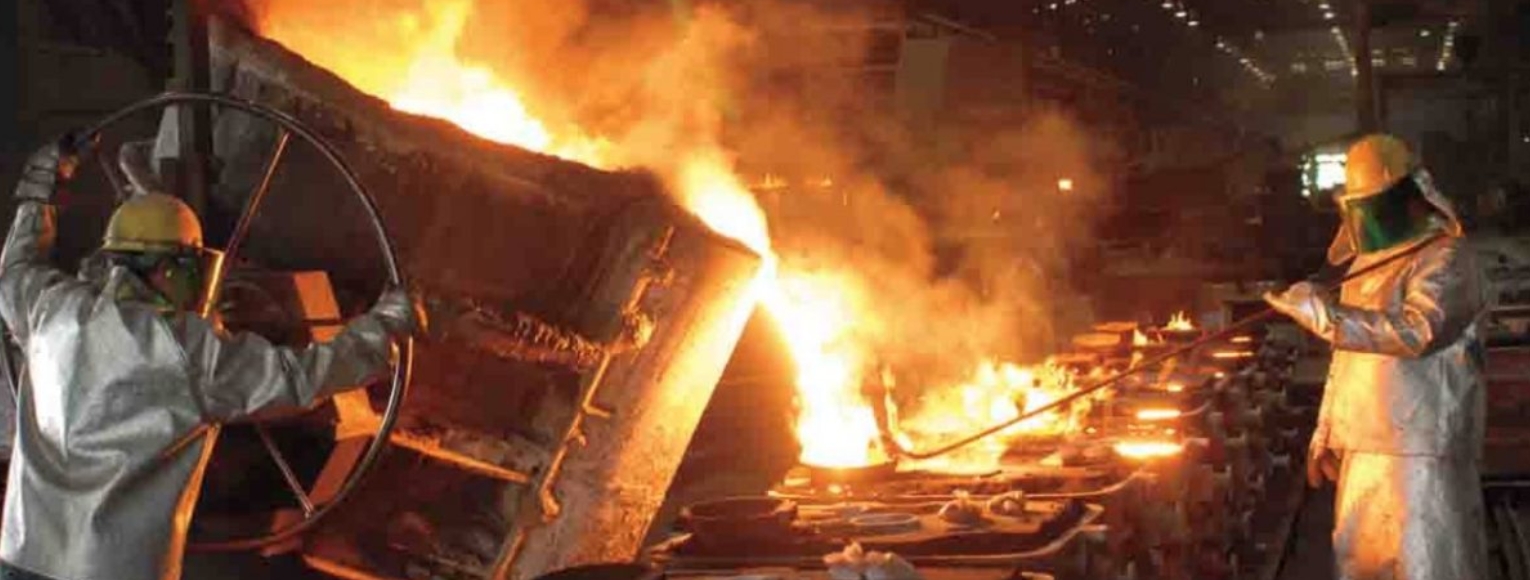
Lost foam casting is an advanced form of investment casting that offers numerous advantages over traditional sand casting methods. Here’s a comprehensive guide to the lost foam casting process:
1. Pattern Creation
- Material Used: Patterns are typically made from polystyrene foam, which is lightweight and can be easily shaped.
- Process: The desired shape for the final metal object is carved or molded into the foam. These foam patterns are usually created in sections and then glued together.
2. Cluster Assembly
- Assembly of Patterns: Multiple foam patterns can be attached to a single sprue to form a cluster. This assembly mimics the final arrangement of lost foam castings.
- Importance: This step is crucial for mass production, allowing multiple parts to be made in a single casting.
3. Coating with Refractory Material
- Application: The foam pattern cluster is dipped into or sprayed with a refractory ceramic coating.
- Purpose: This coating creates a barrier that helps maintain the shape and surface finish of the final casting.
4. Drying
- Process: After coating, the patterns are allowed to dry completely.
- Environment: Drying usually occurs at room temperature, but elevated temperatures can be used to speed up the process.
5. Investment into Sand
- Embedding: The coated and dried pattern is placed into a flask and surrounded by unbounded sand.
- Compaction: The sand is compacted around the pattern, offering support during the metal pouring.
6. Pouring
- Melting the Metal: Metal is melted in a furnace to the required temperature.
- Pouring: The molten metal is poured into the flask, filling the space occupied by the foam pattern.
- Foam Decomposition: The heat from the molten metal decomposes the foam pattern, leaving the metal to take its shape.
7. Cooling and Solidification
- Process: After pouring, the metal is allowed to cool and solidify within the sand mold.
- Timeframe: The cooling time can vary based on the metal and size of lost foam casting.
8. Shakeout
- Removing Sand: Once the metal has cooled and solidified, the sand mold is broken away from lost foam casting.
- Recycling: The sand can often be recycled for use in future castings.
9. Finishing and Inspection
- Cleaning: Lost foam casting is cleaned of any residual sand or scale.
- Finishing: Additional processes like grinding or machining may be necessary to achieve the desired final dimensions and surface finish.
- Inspection: Each lost foam casting is inspected for quality assurance, ensuring it meets the required specifications.
Advantages
- Complexity and Detail: Allows for intricate designs with complex geometries and undercuts.
- Reduced Waste: Since the foam vaporizes, there’s minimal waste produced.
- Surface Finish: Typically yields a better surface finish and tighter dimensional tolerances than traditional sand casting.
Disadvantages
- Pattern Cost: Producing foam patterns can be more expensive than traditional sand molds.
- Size Limitations: Very large castings can be challenging due to the size of foam patterns and handling difficulties.
Applications
- Automotive Industry: Used for engine parts, transmission cases, and other components.
- Aerospace: For precision components with complex geometries.
- Art and Sculpture: Ideal for intricate designs and unique artistic pieces.
Conclusion
Lost foam casting is a versatile and efficient process, particularly beneficial for complex shapes and high-volume production. Its ability to produce precise and detailed castings with minimal waste makes it a popular choice in many industries. However, the cost and size constraints must be considered when selecting this method for manufacturing projects.
